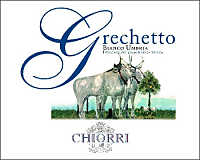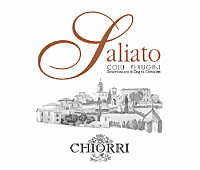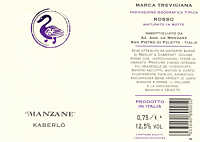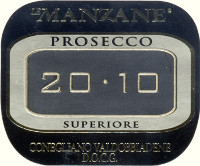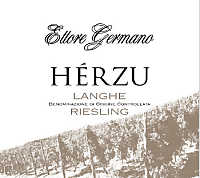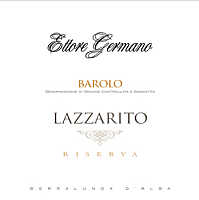|
Everything begins with grape, from that small golden or purple red berry
having a sweet and sour juice. It may seem to be not that much, but the
destiny of every wine is indissolubly associated, harvesting after harvesting,
to the fate of those small grape berries. The quality of every wine, for
better or for worse, begins from here, from the quality and characteristics of
grapes with which is it being produced. Not everything depends on grapes, of
course, as there are many factors playing a role in the quality of a wine.
Grape is just one of the many and, undoubtedly, it plays a fundamental and
irreplaceable role. All the other factors - among the many, environment,
micro climate and soil - are elements playing a role in order to reach the
same goal: determining wine making and organoleptic qualities and
characteristics of grapes. The goal is to favor the best viticultural
conditions in order to get the best possible quality.
In the winery, as it is commonly known, there can be made real miracles, by
completely changing a wine and its characteristics, however with a bad quality
raw matter the job becomes pretty hard. Quality grapes, in case they are
properly processed and respected in the winery, will easily give
quality wines, bad quality grapes will make, in the best case, a mediocre
wine. For the sake of truth, also in the best cases it is sometimes possible
to get a wine making failure: there is also who is capable of making a
mediocre wine from good quality grapes. Quality wine is however the result of
a process beginning in vineyard and ending in the glass, determined by the
culture and presuppositions for quality used in the cultivation of grapes and
in the winery. The goodness of these processes determine the sensorial and
organoleptic quality of every wine.
We cannot talk about the best grapes in an absolute way, as the quality of
every grape is always relative to the territory in which it is being
cultivated and depending on human interventions. On this regard, we can
consider, for example, one of the most famous grapes of the world and capable
of making wines of endless elegance: Pinot Noir. Hard grape to cultivate and
to vinify, Pinot Noir, first of all, needs quite specific environmental and
climatic conditions, giving its best wines in non excessively warm areas.
Cultivated and vinified in hot and sunny areas, Pinot Noir completely loses
its elegant character and becomes flat and round, with ordinary aromas so
distant from the typical finesse of this variety. A grape capable of giving
great wines in a place, it is not necessarily capable of doing the same in
other places.
Every grape has absolutely typical qualities and which tend to come out from
the glass no matter the place where it was being cultivated, qualities
strongly marking the presence of each specific grape in a wine. These
characteristics, affecting every organoleptic aspect of a wine, are however
perceived with different intensities and quality according to territory,
cultivation and wine making techniques. By still considering Pinot Noir as an
example, no matter the place where it has been cultivated in, the grape always
expresses to the taste its characteristic acidity as well as showing a pretty
high transparency. The intensity of these stimuli change according to the
territory, however the typical characteristics of every grape will always be -
and in general terms - found in all of their wines. The organoleptic
characteristic to be mainly affected by cultivation, territory and environment
is the olfactory profile.
|
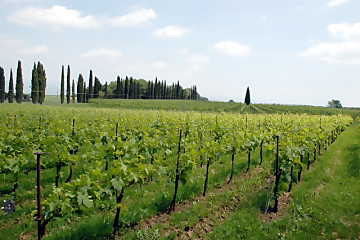 | |
| Everything begins from the vineyard: the
good and bad qualities of a wine depend on the fruits of vine | |
|
The intensity and quality of primary and secondary aromas of a grape are
frequently affected by the environmental and climatic conditions of the place
where it is being cultivated. Every territory is in fact capable of giving a
wine nuances and characteristics absolutely unique, a condition which
is expressed in every sensorial aspect of a wine and, in particular, in the
olfactory profile. For example, let's consider Sauvignon Blanc: its
characteristic aromas will be completely lost in excessively hot and sunny
places, whereas they will express of all their finesse in cool and mild
places. For the sake of completeness, it should be noticed the organoleptic
quality of a wine - smell and taste, in particular - are also strongly
affected by grape ripeness at the moment of harvesting. Unripe grapes will
make wines with a pronounced acidity, whereas ripe ones will give a rounder
and smoother taste.
The characteristics of the soil strongly affects the quality of grapes, as
well as their coloring property. The composition of the soil- and therefore
the rootstock of a vine - directly affects not only the cultivation and
biology of the plant, but also wine making and organoleptic qualities of a
grape. For example, grapes cultivated in a mainly sandy soil, will give wines
with paler color and a high transparency, with a light body. The same variety
cultivated, for example, in a soil mainly made of clay, it will give a wine
with a more intense color and a lower transparency, as well as a more robust
and round body. Every soil has specific qualities, capable - according to its
composition - to drain or to hold water as well as organic and mineral
substances. Clay has a higher capacity of absorbing water than sand, as well
as having a lower draining factor.
Besides the care you should take both in vineyard and in winery in order to
get quality grapes and, therefore, wines capable of expressing the best
characteristics of a variety, we should also consider every grape has specific
qualities affecting the sensorial profile of a wine. Every variety has in fact
proper qualities which can determine, in good part, the organoleptic
characteristics of their wines. From color to taste, every grape claims its
identity through wine by exalting, last but not the least, the expression of
the territory in which it has been cultivated. These factors, we should not
forget it, are however defined according to viticultural and wine making
criteria and processes. The qualities of grapes and their sensorial
peculiarities can in fact be altered - both in a negative and positive way -
in the vineyard as well as in the winery. It will be the honesty and culture
of both vintner and wine maker to define this important qualitative and
organoleptic factor.
The aspect of a wine is mainly determined by the primary classification of
grape variety, a quality expressing different colors and nuances according to
each variety. White berried grapes, apparently capable of making wine with the
same white hue - indeed, it is yellow - make a wide variety of nuances
and colors. The chromatic richness could seem wider in red berried grapes,
indeed, also white berried grapes are capable of such a range. In red grapes,
the coloring property is determined by anthocyans, polyphenolic substances
that, according to quantity, determine both intensity of color and
transparency. Transparency in white wines is generally very high, however it
will be possible to see chromatic differences depending on the specific
qualities of each variety. Color and transparency of each grape - either white
or red - can be altered, increased or decreased, by using specific wine making
techniques, such as filtering and the use of cask or barrique.
Among the organoleptic aspects of a wine, the one mainly expressing the
quality of grapes is the olfactory profile. Also in this case we should
notice by means of specific wine making technique it is possible to alter, or
even completely change, the olfactory profile of a wine and its grapes.
According to an aromatic point of view, grapes are classified into three
categories: aromatic grapes, semi aromatic grapes and non aromatic grapes. To
the first category uniquely belong the grapes whose wines directly
express the typical aroma of grape and its juice; to the second those which
partially have this characteristic; to the third all the varieties in which
this characteristic is not found. On this regard, it should be noticed
alcoholic fermentation is fundamental for the expression of grape's aromas.
For this reason it is in fact said that “the aromas of grapes are
revealed through fermentation thanks to the job of yeast”.
Yeast can substantially affect the olfactory profile of a grape, this is
however an unavoidable characteristic as they are indispensable both for
alcoholic fermentation and the aromatic expression of a grape. This is one of
the main reasons feeding the endless debate among the ones who favor the use
of the so called selected yeast and those who favor the exclusive use
of wild yeast. In every place, every vineyard, there is the development
of a specific colony and combination of yeast absolutely unique, a condition
being true both for yeast having a positive effect on fermentation and those
having a negative effect. The influence of yeast on the aromatic profile of
the grape is also according to variety, as some grape aromas are however found
and well perceptible despite the work of yeast. The aromas perceived in the
glass are therefore the direct result of grape olfactory profile to which are
added the aromatic characteristics of yeast and fermentation aromas.
The taste of wine is determined by grape's organoleptic qualities. Grape
juice, tasted as soon as it is freshly made, has a sweet and sour taste,
becoming more or less astringent in case of red grapes and which already got
this color. Grape juice taste, or better to say, each flavor making it,
changes according to variety and ripeness. In ripe grapes the quantity of
sugar will be higher than unripe grapes, whereas in unripe grapes we find the
very opposite condition. Also at full ripeness, each grape is characterized by
an absolutely unique sugar to acid substances ratio. For example, we can
consider Merlot and Pinot Noir: the former has a lower quantity of acid
substances than the second. This characteristic will directly affect both the
gustatory profile of wine and its balance, as well as the potential quantity
of alcohol produced at the end of fermentation.
The same consideration is true - as for red berried grapes - for the quantity
of polyphenolic substances contained in the skin and responsible for wine
astringency. For the sake of clearness, the intensity of astringency in a wine
is also determined by the time of maceration of skins in the must. This means
a very astringent grape can also make a wine with a moderate astringency in
case the maceration time is short. Finally, the quality and nature of aromas
in a wine contribute to the overall definition of taste. A wine with a non
truly rich and simple olfactory profile, will tend to have an equally simple
and non truly complex taste. Grapes, of course, are not sugar and acid
substances only: in their composition we also find mineral substances and
proteins, both directly affecting the taste of wine and its tactile
characteristics. The quality and quantity of these substances are also
relative to the type of soil in which the grape was cultivated, this is also
proving - once again - the importance of territory, unique and unrepeatable,
for the expression of a grape and its wines.
|


